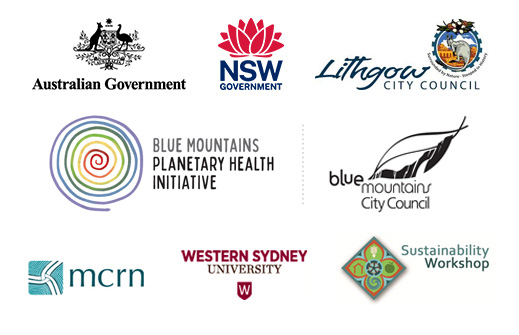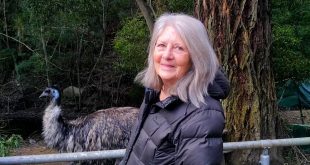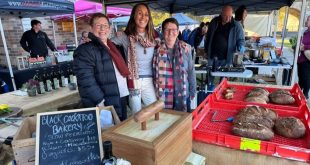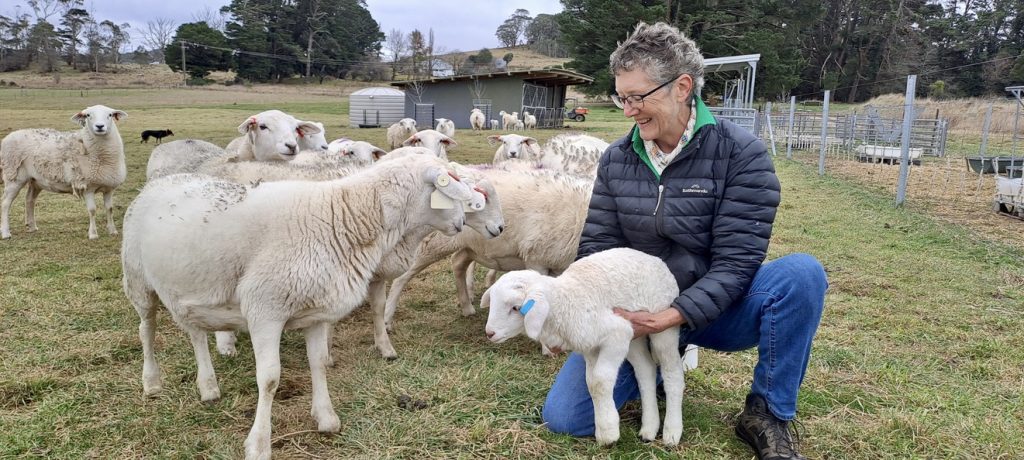
Megan Halcroft with a one-week-old Australian White Sheep Lamb at her Bee Friendly Farm in Hampton
Story and photographs by Tracie McMahon
Dr Megan Halcroft, a native bee specialist and her husband Steven Ruttley, are certified Bee Friendly Farmers in Hampton. We look at what this certification means and the choices Megan has made to ensure their sheep stud is bee-friendly as well as environmentally and economically sustainable.
When Dr Megan Halcroft, native bee specialist, mentioned her Bee Friendly Farm during a presentation at Eskbank House Museum, I was intrigued. Unlike European honeybees, native bees do not have hives or produce honey, so are not considered agricultural livestock.
Thankfully, Megan’s presentation ethos includes the principle that ‘there is no such thing as a stupid question.’ She explained that Bee Friendly Farming is an approach to farming and directed me to the website for the organisation that certifies farms as ‘bee friendly’.
Why this matters
- Bees are essential pollinators – crucial to ecological biodiversity, agriculture and food security. The Bee Friendly Farming program is a national taskforce of Australian experts, including scientists and farmers, providing informed advice to farmers and gardeners to preserve and protect bees and their habitat.
Bee Friendly Farming Australia “provides guidelines for farmers and gardeners to promote pollinator health on their lands [and] sets standards for sustainable land management on important concepts like planting pollinator food resources, providing nesting habitat, and incorporating integrated pest management.”
Megan and her husband, Steven Ruttley, operate Hampton Springs, an Australian White Sheep stud on a thirty-acre property at Hampton. They are certified as Bee Friendly Farmers, which means that the farm:
- Offers forage providing good nutrition for bees on at least 3% of land. Forage can be temporary, including cover crops.
- Provides bloom of different flowering plants throughout the growing season, especially in early spring and late autumn. There is no minimum land coverage for seasonal bloom.
- Offers clean water for bees (if not inhibited by government mandated water restrictions).
- Provides permanent habitat for nesting through features such as hedgerows, natural brush, buffer strips, or bare ground.
- Practices Integrated Pest Management (IPM); and reduces or eliminates the use of chemicals. https://www.beefriendlyfarming.org.au/
Operating a farm on thirty acres is challenging, and I am curious about the choices Megan and Steven have made to ensure that their farm is not only bee friendly, but sustainable as a farming business, economically and environmentally.
Megan kindly invites me for a visit, and I’m delighted. Secretly, I’m also hoping to meet the lamb Steven safely delivered while Megan was giving her presentation.
Megan and Steven acquired the land in 2014 when it was subdivided from a larger property. As the previous owners had not used chemicals to control weeds, the land was pesticide free but it had been eroded and overstocked. The property had a large dam and underground springs. For the first twelve months Megan let the pasture rest, watching and learning from natural processes, while she researched. She wanted to operate a sustainable farming enterprise, not a ‘hobby farm’.
Her research led her to Baringa, a prize-winning sheep stud in Oberon. Megan says their advice throughout her farming journey has been invaluable, and she stresses the importance of spending time ‘doing your homework’ and seeking expert advice, to ensure the animals and the land are well cared for.
They divided the land, from three paddocks into ten, with both permanent and temporary fences, so pastures could be well rested between grazing. The pastures contain a mix of native and introduced grasses and now have extensive cover after three seasons of drenching rain.
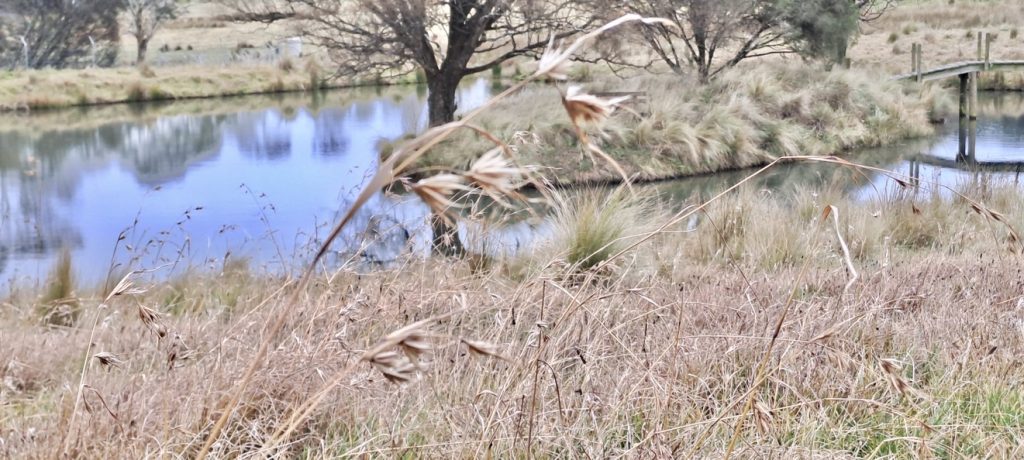
Kangaroo Grass in seed above the dam.
The property is currently stocked with 60 head, comprising breeding ewes, stud rams, new lambs and the previous season’s offspring which are being prepared for sale. Megan says this is an unusually high number for them but reflects the feed currently available.
We pop by the ewes’ paddock, and I ask if they are in lamb, given their barrel-like bellies, but no – they are just enjoying the bounty of good feed in healthy pastures.
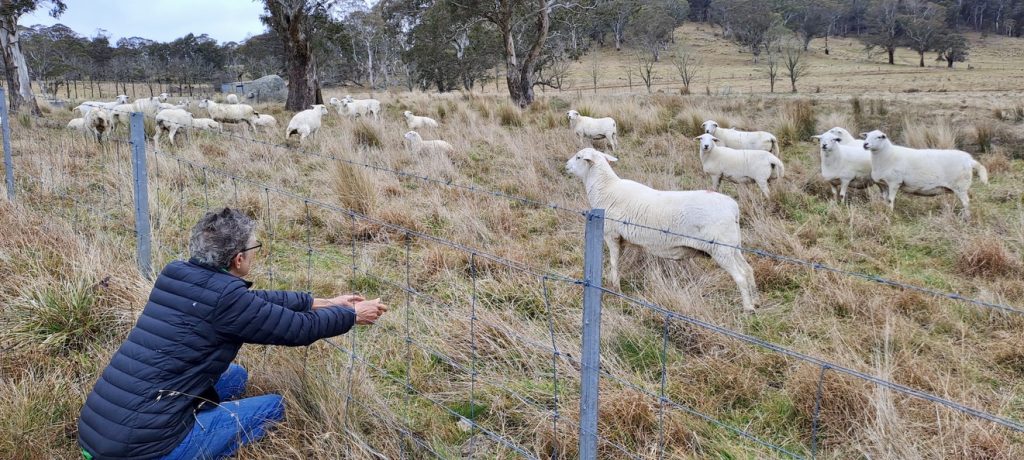
Megan checking on the ewes.
The sheep are clearly thriving, but back to the bees, and the actions required to ensure a farm conforms to Bee Friendly certification criteria.
In a resting paddock, Megan shows me a section of ground sown in April with a mix of six pesticide-free seeds. The mix includes Brassicas, grasses, clovers and chicory. She selected this mix to ensure she has flowering crops from late Winter to late Autumn, as native bees are active throughout this entire period. The combination provides a food source for the bees and a nitrogen boost for the soil.
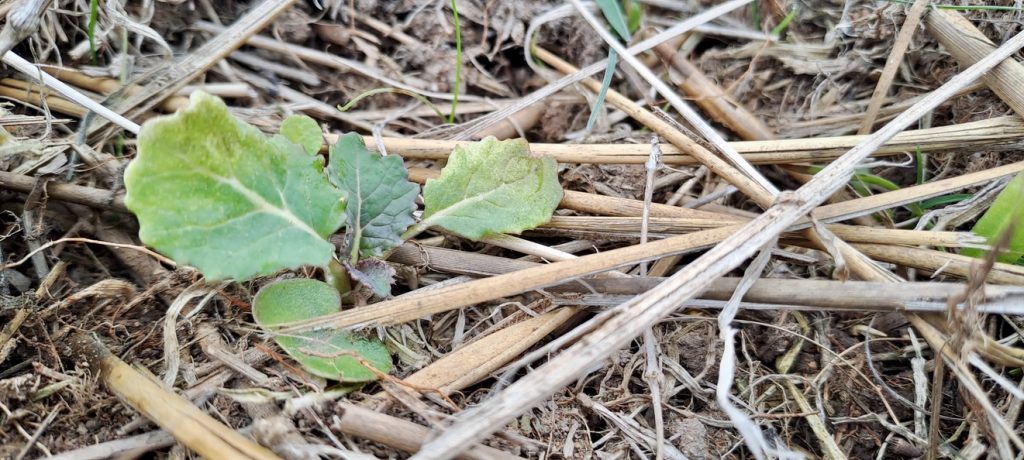
Brassica seedlings emerge from the newly sown section of pasture.
The land immediately surrounding the house is planted with a variety of native and exotic flowering species, a vegetable garden and a small orchard. The rain in the last few seasons has adversely affected many of the natives, but she continues to replant to ensure diversity and abundance throughout the year.
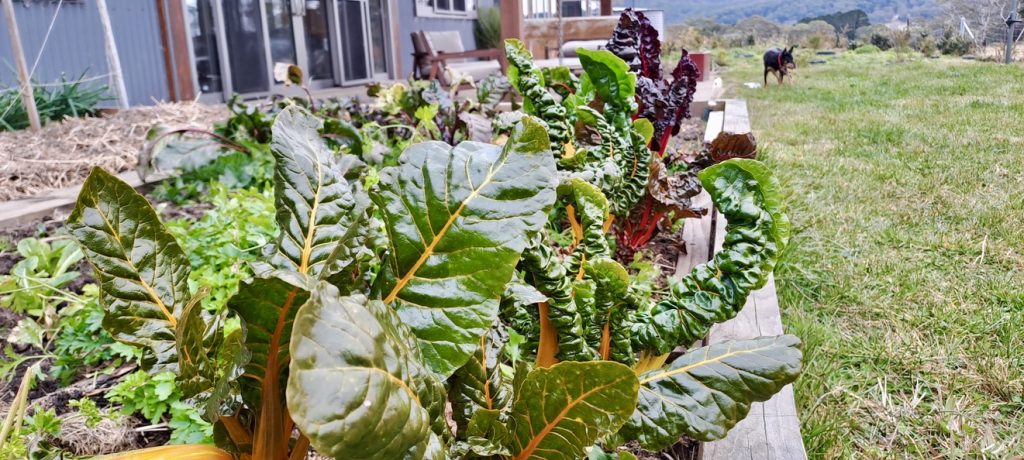
A section of the raised vegetable garden beds.
The landscape incorporates raised earth mounds, utilising soil displaced during construction of their house. The mounds also provide wind protection for the orchard and other smaller plantings and are planted sporadically with grasses and chicory. Sections are left bare to allow nesting habitat for native bees. During drought years the mound planting has also been a valuable source of harvestable feed for the stock.
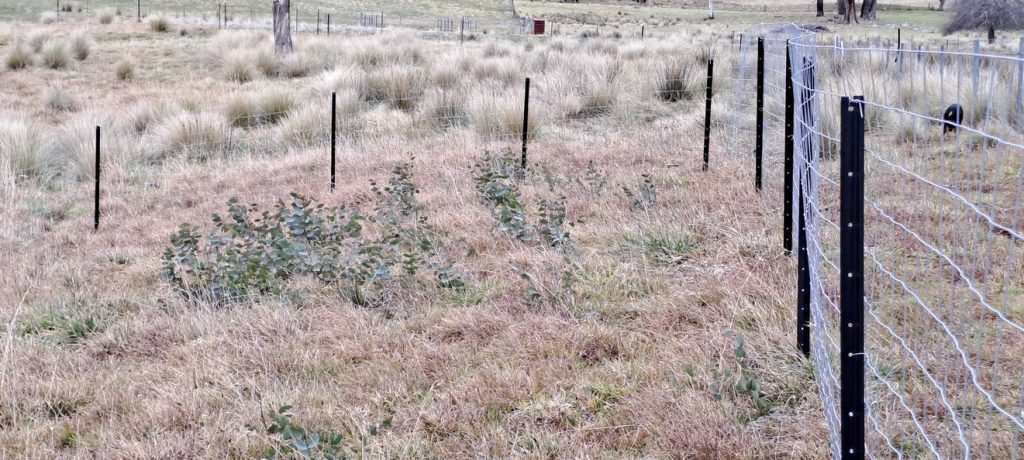
A section of the paddock fenced off to allow naturally occurring Eucalypt seedlings to regenerate.
Recent wet seasons have resulted in the germination of Eucalypt seeds on rested pasture. Megan is careful to fence the new growth so it can gain a foothold without being impacted by stock.
Megan and Steven have worked the farm for almost ten years now and I am curious to know if they have achieved their goals of bee friendly and sustainable farming. Megan is happy to report that she has identified 19 different species of native bees on her property. They also continue to improve the quality of their Australian White Sheep, and share the property with wombats, wallabies, kangaroos, echidnas, an array of bird life including, Wood Ducks, a White Cattle Egret and a family of Stubble Quails.
More information on Bee Friendly Farming can be found at https://www.beefriendlyfarming.org.au/. The site also provides fact sheets and information. Gardeners can be certified as Bee Friendly Farming Gardeners, with certification available for “home, public, school and community gardeners who promote and provide habitat and pollinator health in non-commercial settings.”
This story has been produced as part of a Bioregional Collaboration for Planetary Health and is supported by the Disaster Risk Reduction Fund (DRRF). The DRRF is jointly funded by the Australian and New South Wales governments.
